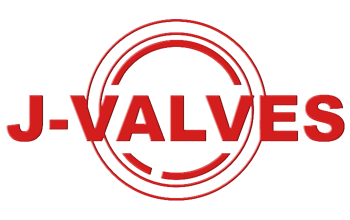
J-VALVES Fully Welded Ball Valves And Split-Type Ball Valves: Design Standards for Long-Distance Pipelines (GB/T 19672 Vs ASME B31.4)

I. Structural Features of J-VALVES Fully Welded Ball Valves and Split-Type Ball Valves
(I) Fully Welded Ball Valves
THE FULLY WELDED BALL VALVE IS A BALL VALVE WITH AN INTEGRAL STRUCTURE. Its valve body is connected into a whole through the welding process. The advantage of this structure lies in reducing connection points and improving the overall strength and sealing performance of the valve. FULLY WELDED BALL VALVES usually adopt narrow-gap submerged arc welding technology, and the welding parameters are strictly controlled during the welding process to ensure the quality of welds and the overall performance of the valve.
(II) Split-Type Ball Valves
The split-type ball valve consists of multiple components, usually including the valve body, left and right connecting bodies, etc., and the components are connected by bolts. The advantage of this structure is that it is convenient for maintenance and replacement of components. However, there are more connection points, and the sealing performance is relatively complicated.
II. Comparison between Design Standards GB/T 19672 and ASME B31.4 for Long-Distance Pipelines
(I) Scope of Application of the Standards
Standard Name | Scope of Application |
GB/T 19672 | Applicable to ball valves, gate valves, plug valves and check valves for pipeline systems with nominal pressure PN20~PN400, nominal size not greater than DN1500, pressure class Class150~Class2500 and nominal size not greater than NPS 60 |
ASME B31.4 | Mainly applicable to the design, installation and inspection of liquid transmission pipelines for petroleum, natural gas, etc. |
(II) Material Requirements
Standard Name | Material Requirements |
GB/T 19672 | The valve body material is usually a forging. ASTM A105 is selected when the temperature is above -29°C, and ASTM A350 LF2 is selected when the temperature is below -29°C |
ASME B31.4 | Materials need to comply with the ASME Boiler and Pressure Vessel Code, and welding materials need to meet the requirements of fracture mechanics |
(III) Welding Requirements
Standard Name | Welding Requirements |
GB/T 19672 | Welding needs to meet the requirements of GB/T 150.3 and GB/T 150.4, and 100% non-destructive testing is required for welds |
ASME B31.4 | Welding needs to meet the requirements of Section IX of the ASME Boiler and Pressure Vessel Code for welding and brazing qualification, and non-destructive testing is required for welds |
(IV) Sealing Performance
Standard Name | Sealing Performance Requirements |
GB/T 19672 | Valves need to meet the zero-level sealing requirements, using metal-to-metal sealing as the primary seal and soft sealing as the secondary seal |
ASME B31.4 | Valves need to meet the fire-safe requirements, and the sealing needs to comply with the provisions of API 607 |
(V) Test Requirements
Standard Name | Test Requirements |
GB/T 19672 | The pressure test needs to meet the requirements of GB/T 13927-2008 |
ASME B31.4 | The pressure test needs to meet the requirements of Section VIII of the ASME Boiler and Pressure Vessel Code |
III. Application of J-VALVES Fully Welded Ball Valves and Split-Type Ball Valves under the Two Standards
(I) Fully Welded Ball Valves
· GB/T 19672: Under the GB/T 19672 standard, the design and manufacturing of FULLY WELDED BALL VALVES need to strictly follow the standard requirements, especially the welding process and material selection. 100% non-destructive testing is required for the welds of fully welded ball valves to ensure the welding quality.
· ASME B31.4: Under the ASME B31.4 standard, fully welded ball valves need to meet the requirements of welding and fracture mechanics. Their welding process needs to comply with the requirements of Section IX of the ASME Boiler and Pressure Vessel Code.
(II) Split-Type Ball Valves
· GB/T 19672: Under the GB/T 19672 standard, the connection strength of split-type ball valves needs to meet the design requirements to prevent connection loosening caused by pipeline stress. Their sealing performance needs to meet the zero-level sealing requirements.
· ASME B31.4: Under the ASME B31.4 standard, split-type ball valves need to meet the fire-safe requirements, and their connection strength needs to comply with the requirements of the ASME Boiler and Pressure Vessel Code.
IV. Summary
J-VALVES FULLY WELDED BALL VALVES and split-type ball valves each have their own advantages under the long-distance pipeline design standards GB/T 19672 and ASME B31.4. FULLY WELDED BALL VALVES have high overall structural strength and good sealing performance, and are suitable for occasions with high requirements for sealing and strength. Split-type ball valves are convenient for maintenance and replacement of components, and are suitable for occasions with high requirements for maintenance convenience. In practical applications, it is necessary to select appropriate ball valve types and design standards according to specific working conditions and design requirements to ensure the safe operation of long-distance pipelines.













